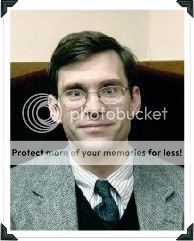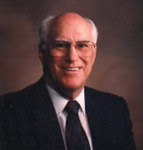G. L. Smith's Experiences While Researching Plural Marriage
"Consecrate Your Brain," part 5
Continuing series with Greg Smith.
See also the Introduction, and parts 1, 2, 3, 4, 6, and 7.
Greg Smith: Well, as I began to dive in, the experience was almost immediately more positive than I had thought. I went in thinking I'd probably conclude that it was all a mistake or disaster. That wasn't the case at all.
The area I thought was most problematic was the hiding the truth or even lying about it. This is a good example of one of those things that John Lynch called a shift from an "Uh oh," to "Ah ha!" moment.1 The tipping point for me was reading a book by Terryl Givens called Viper on the Hearth. He quoted Wilford Woodruff about the "Gentiles" keeping up their "warfare."2 That was an image I had not yet encountered, but suddenly a light went on. From the standpoint of moral philosophy, there are some things that would be inappropriate in normal day-to-day life, but in a war they become excusable, maybe even duties, maybe even laudable.
The question for me then became two-fold:
a) Was this an isolated metaphor used by Pres. Woodruff? Or, did the Saints really conceptualize of things in that way?
b) If this was a common view (and I soon found that it was), was it a legitimate or defensible view, or was it mainly a persecution complex or over-blown rhetoric?
I soon found that (b) was certainly defensible; I came to have difficulty seeing it in any other way, for the most part. Obviously there were a variety of motives on the part of individuals opposed to the Saints (some of which were laudable and some were despicable, with everything in between), but it was a war by any means necessary short of violence. And the threat of using military power was often bruited in Congress, so even that wasn't off the table. (And, given the Saints' experiences in Missouri, Illinois, and the Utah war, I'm sure it seemed even more a live issue to them.)
This was, of course, not a perspective which the critics went out of their way to give their readers. But, I also eventually found that it wasn't unique to me; some other LDS authors had certainly appreciated it, though they seemed to have simply taken it for granted, rather than explore it from "first principles" and make a rigorous case for the implications.
So, that sent me into things like the Nuremberg defense of acts carried out in war, and moral philosophy generally, which led to readings on civil disobedience, which required a close exegesis of LDS scripture and our duties to civil law and government. There's also a fair amount of legal commentary and philosophy based on the supreme court decisions about plural marriage, because they were the first time religious belief and action been parsed out. Subsequent legal commentators have not gone easy on the court; in retrospect, there is much about their decision and conduct that is indefensible.
(At this point, I also learned—quite by accident—that my brother, who was working on his Masters in Law at Harvard, had chosen to examine the legal attacks on plural marriage, and then coupled that with an analysis of where current supreme court jurisprudence would lead if applied to such a case today. So, that was a completely unplanned confluence of interest—I can't remember our family ever sitting around talking about plural marriage, though we did have some ancestors who were polygamists. So my mother mentioned one day that he was working on this, and I said, "What??? Does he have anything done?" So, I fired off an e-mail, and he sent me his draft and pointed me to some more articles, and that all dovetailed beautifully with what I had already done on my own, so I knew I was on to something worthwhile.)3
LoGP: So your attitude going into it was that plural marriage was a well-intentioned error at best, but you started getting into all this other stuff and a different view was emerging?
GS: After a while I became firmly convinced—far beyond what I would have thought possible—that not only were the Saints as a group not morally condemned for the choices they had made, I was amazed and humbled at the grace with which they had, in the main, confronted a host of competing obligations. (There were individual slips and the like, of course--but fewer than I would have expected.) I don't know how they could have done better. I was a little irritated--but only because we didn't know this story better, because I think it's one of the most inspiring, moving stories of American history. Real grace under fire. I think the day may well come when we have to, as a people, return to the lessons and challenges of that period, and I think we'll draw inspiration and strength from the choices they made and their efforts to navigate the clash of duties and loyalties that arose then. (I don't think those issues will come up in the context of polygamy, but in the context of living one's faith under hostile secular circumstances.)
LoGP: Now, where does the rubber meet road for the average Church member who might be wondering about polygamy, or any particular troubling issue?
GS: You can consider my work in this area as something of a self-directed course in research methodology and critical judgment. At the FAIR conference, I laid out the distortion of sources that I found in Van Wagoner's Mormon Polygamy: A History on Joseph's supposed womanizing.4 Sorting that out was my first real experience with source checking, but once I did that, I was a changed man. My innocence was gone, and I realized that on something like this you simply couldn't trust that authors were giving you the whole story. I also quickly became convinced that sometimes the distortion was pre-meditated, because some of the omissions or distortions which I found dealing with this topic could not have been anything but intentional. They required too much work to be accidental. I also quickly began to detect an unmistakable bias among certain authors and publishers--especially Signature Books.5 That too was a new idea for me; I hadn't really considered a press or editor having an agenda pursued over the long-term. (I found later that others had long noted this tendency before me, so I realized I was re-plowing ground already well-worked.)
But, I wouldn't have figured any of this out if I hadn't been willing to kind of dive in deep and not care what I found. So, as it turned out, that was the best thing for the answers I had wanted. But, I had to go in assuming those answers weren't there.
LoGP: How does this personal experience and knowledge through research become embodied in the work you do, in articles or presentations you have created on the subject of plural marriage?
GS: When I write now, I take as my audience someone who has written or believed some of the critical accounts that I found to be not so reliable. That keeps me (I hope) as rigorous and honest as I can be. I assume that any countering bit of data will be dredged up and thrown my way, so I'd rather raise it myself and integrate it into the picture I'm assembling—I've lost any illusions I had about this discussion being just about history or some neutral issue. The wider subtext of a broader debate is always there. So, at the least, I hope that whatever audience I have will concede that I'm being as thorough and honest as I can, even if I'm dead wrong. I don't want people to read me as I've read some others, and saying, "Man, he's trying to pull a fast one there. I can't believe I almost fell for that."
This explains why I am too wordy, too long, and too many sources. (Just ask my editors!) Why? Because the absence of those things destroyed my trust in many authors, since I was left to rely on their summary of the data, which trust they abused. So I don't feel to expect the trust of my reader(s)—I assume that he or she has been burned before, as I was (even if they don't know yet that they've been burned!).
So dealing with the information myself has not been hard at all, just a lot of work. As I've indicated, my initial worry was that whatever I found or discovered might be beyond me to deal with in a healthy, constructive way. Having been assured that I'd be okay, whatever I found or concluded, I could just sort of dive in. My repeated experience was that the more I learned, the better Joseph and the Saints generally looked. There's always more to the story than those who are critical let on. That started as a great surprise to me, but after it happened a few times, I've almost come to expect it. Now, when I hear something new, my first thought is, "I wonder what else there is there?"
LoGP: Readers are, as always, invited to join the conversation. Questions or comments for Greg can be added in the comments section. In the next installment of the series (the last installment dealing directly with plural marriage) Greg Smith will approach some of the reasons he believes plural marriage can be so troubling for some strong members of the Church. He will also talk briefly about formulating responses to criticism from sectarians and secularists, respectively. Part 7, the concluding installment, returns to the overall theme of consecrating your brain and individual relationships with God.
FOOTNOTES
[1]See John Lynch, '"Uh oh!' to 'Ah ha!' in Apologetics: 20/20 Foresight for a Faithful Future in Defending the Church," 2009 FAIR Conference, transcript here. The image is adapted from Wilhelm Braune (anatomist, 1831-1892) and C. Schmiedel (artist, fl. mid-1800s), "Topographisch-anatomischer atlas nach durchschnitten an gefrorenen cadavern," Leipzig, 1872. Chromolithograph. National Library of Medicine, nlm.nih.gov.
[2]
Terryl L. Givens, The Viper on the Hearth: Mormons, Myths, and the Construction of Heresy (Religion in America), Oxford University Press (1997), p. 39. Excerpts can be read at Google Books.
[3]
Greg is referring to Stephen Eliot Smith, “The ‘Mormon Question’ Revisited: Anti-polygamy Laws and the Free Exercise Clause” (2005), unpublished LL.M. thesis, Harvard Law School.
[4]
Richard Van Wagoner, Mormon Polygamy: A History, Signature Books (1992). Smith discussed the book in his FAIR presentation, "Everything You Always Wanted to Know About Plural Marriage* (*but were afraid to ask)."
[5]
There has been no love lost between Signature and some writers from the Neal A. Maxwell Institute for Religious Scholarship (formerly FARMS). See Louis Midgley, "The Signature Books Saga," FARMS Review: Vol. 16:1, pp. 361-406. From Signature's side, affronts have been less up front, more from the back. The Signature website "news and events" section periodically ridicules FARMS or tries to hold them to account. A host of FARMS disparagement can be found in the footnotes of Signature's second edition of D. Michael Quinn's Early Mormonism and the Magic Worldview. Reviewers for BYU Studies and the FARMS Review panned the book.




 8
Comments
8
Comments



